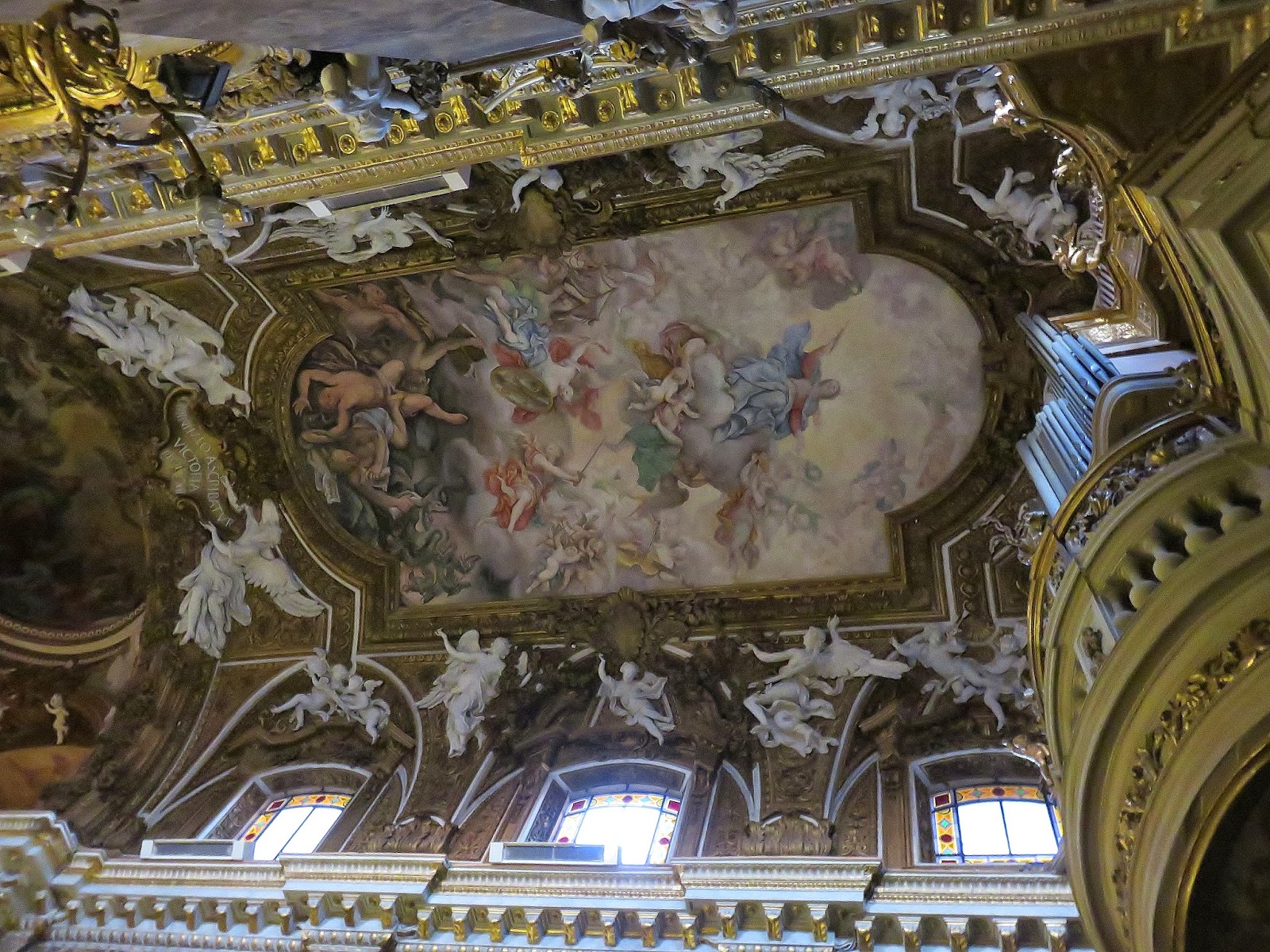We sailed past a steaming volcano and into the Tyrrhenian Sea.
We were on our way to the port of Civitavecchia, the disembarkation point for our cruise, and the road to Rome.
We were deposited on the dock to wait for a shuttle bus to take us to the train station, which would take us into Rome. We waited and waited, along with a gaggle of other travelers. Two taxi drivers from a company authorized to come onto the dock finally convinced me to join a family of four for a ride right to our hotels in Rome. We got the price down to 55.00 Euros for the two of us, and it turned out to be money well spent. We got to the door of our hotel a full two hours sooner than we figured it would take us via public transportation, not to mention wrangling our two big suitcases.
Our Rome neighborhood for the next five days was right off the Piazza Republica and very near the Termini Train station. We had easy access to subway, bus and train transportation.
Piazza Republica↓
The Piazza Republica is built over part of the area where the Roman Baths of Diocletian once stood. Part of the Baths, especially the grand hall, still stand and were converted into a Catholic church, the Church of Santa Maria degli Angeli. This is where we began our Tours of Rome, right here in our neighborhood.
This church was designed by Michelangelo in 1561. It has been changed since then, but much of his design still remains.
Embedded into the floor is a brass rod that acts as a sun dial. This celestial clock is also a calendar.
I found the last line of this explanation to be very profound: Stones had the same status as stars. For all of us who are mere "stones" and not "stars" that says something.
We checked out the train station to see how it works, because we would be coming back here when it was time to fly home. We also found a great cafeteria there and had lunch.
That afternoon we found several recommended sites. The Church of Santa Maria Maggiore is a huge basilica dating to the time of Pope Sixtus III, 432-440. While the facade has been changed, much of the interior is original.
It contains the oldest existing mosaics dedicated to the Virgin Mary, dating to the original construction in the 5th Century.
The tombs of Pope Sixtus V and the artist Bernini, who remade Rome in the baroque style, are here, as well as the reputed wooden fragments of the cradle of Jesus.
The National Museum of Rome covers the thousand years of Roman Empire history, much of it told in the lifelike sculpted busts of its emperors and other important citizens.
The Emperor Augustus, Grandnephew of Julius Caesar and adopted by him, became the successor to Ceasar, killed Brutus, eliminated his rivals Mark Antony and Cleopatra and became the supreme ruler.
Agrippa Minore (the Younger) was the great-granddaughter of Augustus, sister of Caligula, 4th wife of emperor Claudius, and the mother of Nero. ↓
And so you get the idea. There was a great deal to be learned here, and we faded before we could take it all in. But these are the folks whose statues would have lined the streets in the forum, which we would visit later.
The Romans loved the beauty of Greek statues and crated up centuries old works like this of Dying Niobid, 440 B.C. and installed them in their palaces and gardens.
When they ran out of the real Greek works, they began recreating their own in the Greek style. This Discus Thrower is a well preserved Roman copy of the original Greek statue.
There was more to explore in our neighborhood. Rick Steves calls them the baroque surprises on Via XX Settembre, which was a boulevard developed by Pope Sixtus V to beautify the city c. 1580. The street was once lined with grand fountains, obelisks, and churches all decorated in the style of the 1600's- Baroque. We found a few that remain.
The Fountain of Moses , 1588, was opened to celebrate the completion of a huge water works project that finally brought fresh running water to this part of the city.
Here we find one of Bernini's best known statues, St. Teresa in Ecstasy. She has just been stabbed with God's arrow of fire.



































Wow, Linda, I'm tired just looking at all these magnificent pictures. I can only guess at how tired the two of you were at the end of the day. Full up, indeed. :-)
ReplyDeleteLinda, we were very fascinated by all the art in Rome. Glad you are having a good time!
ReplyDeleteI hope you are getting college credit for your travels. How wonderful to see history up close and to experience art appreciation.
ReplyDeleteAll the churches you have seen so far are stunning.
makes me want to go back there again!
ReplyDeleteI spent 2 weeks in Rome in Nov 1969 and enjoyed it immensely. Also toured the Vatican and saw the Sistine Chapel (before restoration), the Basilica, and Pope Paul VI.
ReplyDeleteGreat photos and description of Rome.
ReplyDeletefascinating, I was there 50 years ago on a BYU folk dance tour but only saw a few historical sites. So much to take in....
ReplyDelete